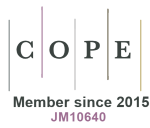Downloads
How to Cite
Arakelyan, A., Fitzgerald, W., Vagida, M., Vasilieva, E., Margolis, L., & Grivel, J.-C. (2016). Addition of thrombin reduces the recovery of extracellular vesicles from blood plasma. Journal of Circulating Biomarkers, 5(1). https://doi.org/10.33393/jcb.2016.2063
Issue
Section
Original research article
Statistics
- Abstract views - 797 times
- PDF downloads - 496 times
Sign up
banners150
Most popular articles in the last 30 days
-
182
-
129
-
107
-
81
-
70









